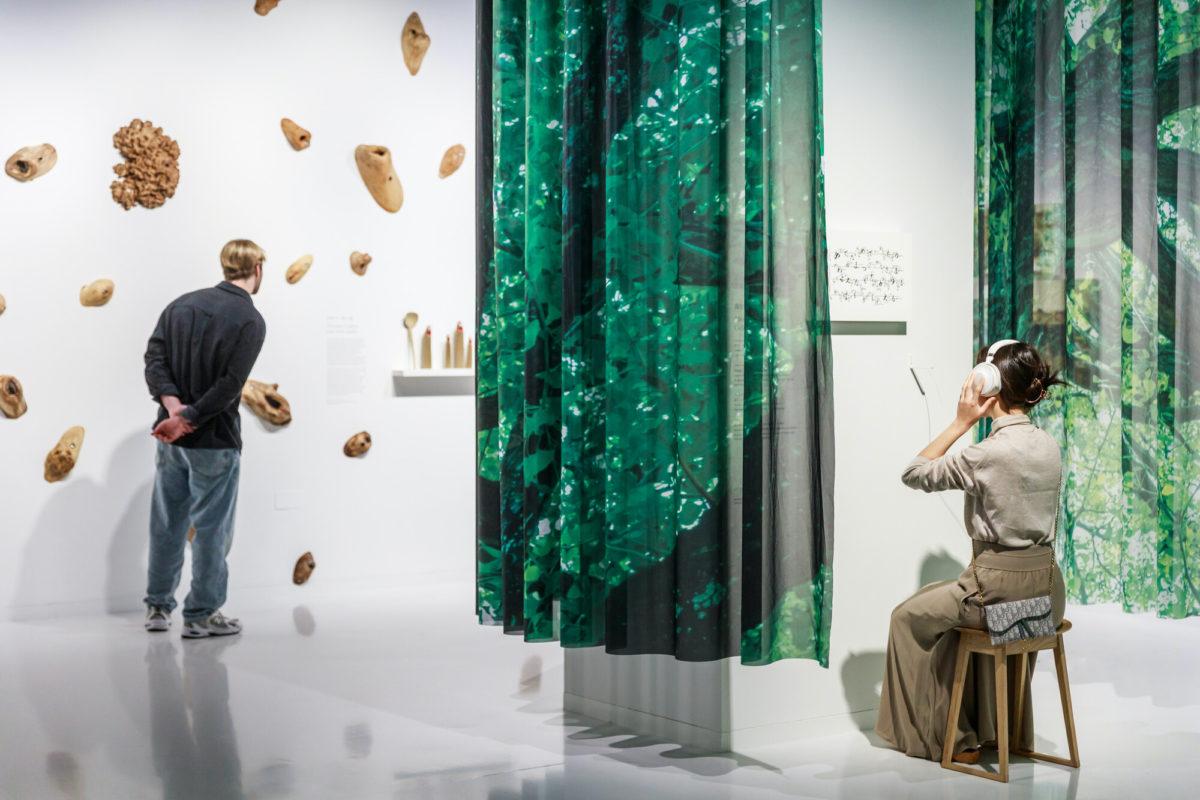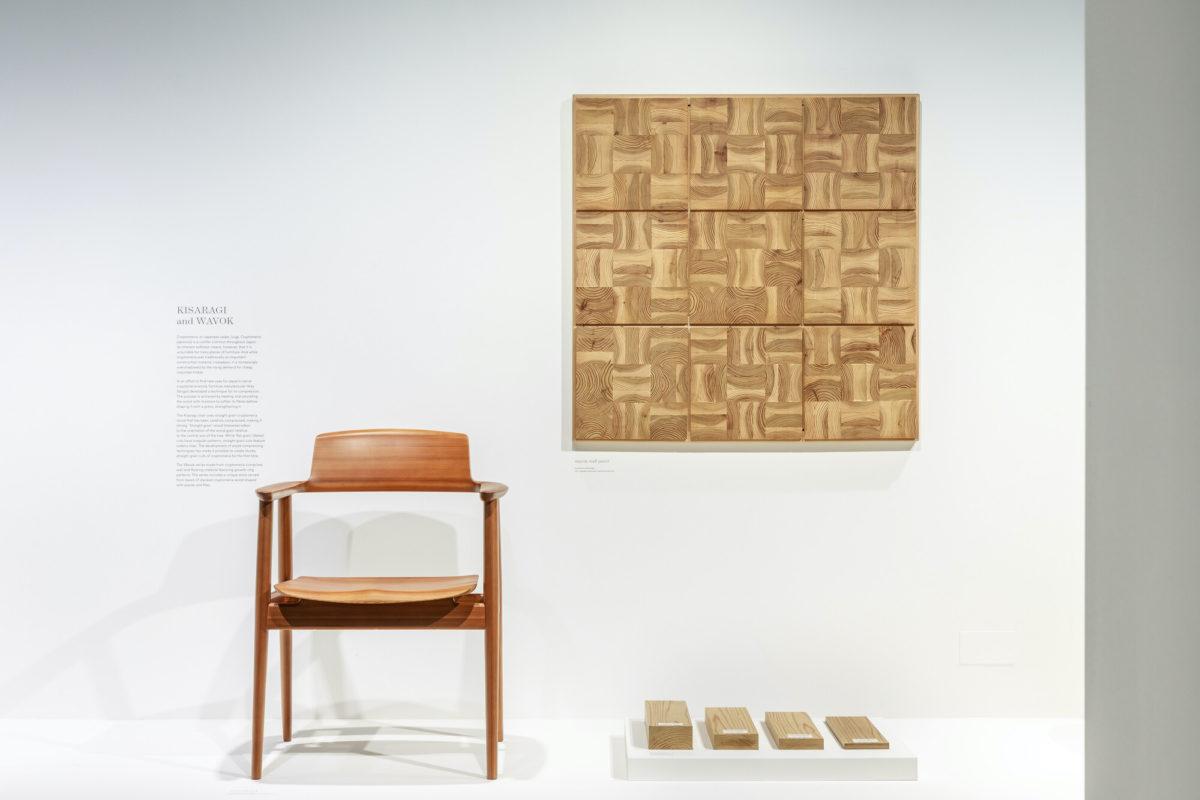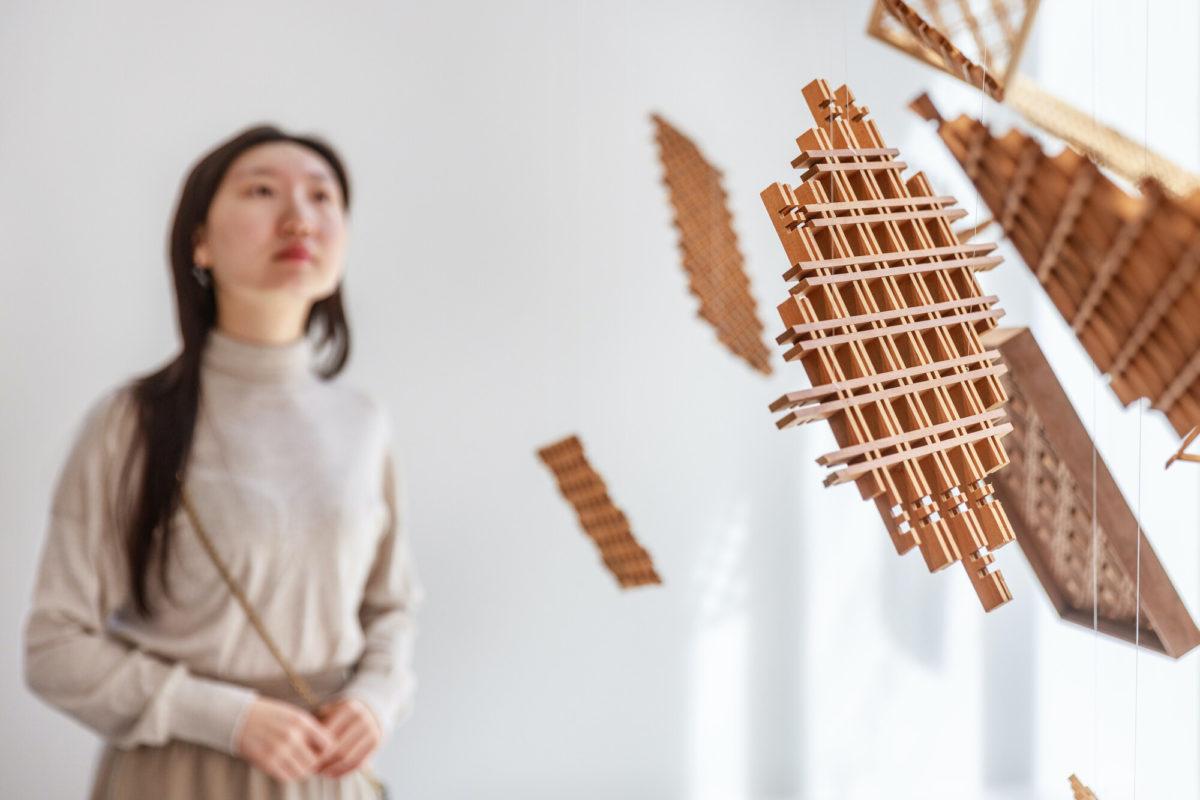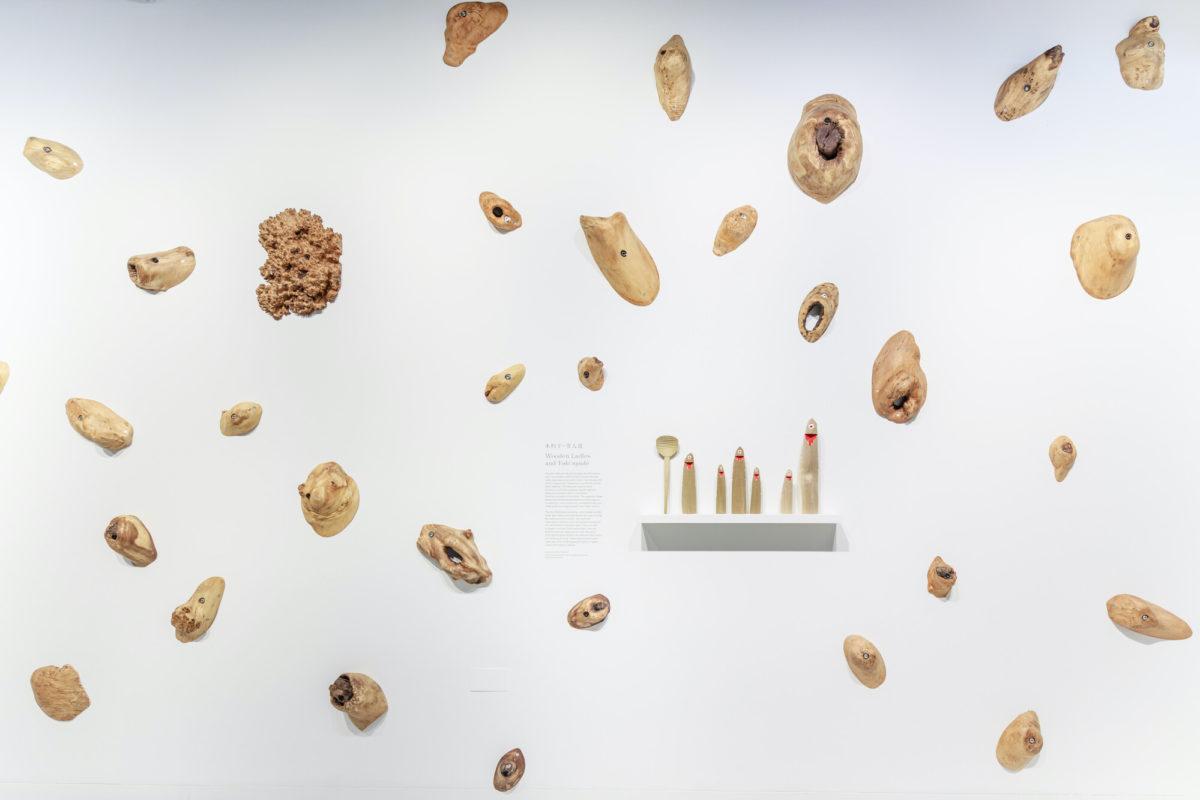The new exhibition explores the art of master woodworking from Japan’s well-known region, highlighting both traditional and contemporary practices
 Photography by Japan House London featuring The Carpenters’ Line
Photography by Japan House London featuring The Carpenters’ Line
Words by Jessica-Christin Hametner
Tradition and modernity mix at The Carpenters’ Line: Woodworking Heritage in Hida Takayama, an exhibition at Japan House London—the capital’s cultural destination that offers guests the opportunity to experience the best and latest from Japan—which showcases how Hida’s master craftsmen seek to reignite traditional skills in today’s world.
‘There are many different things to see in this exhibition,’ ponders Hirokazu Kobayashi, co-founder of Japanese design studio Spread and artistic director of The Carpenters’ Line. ‘Both traditional and modern items are on show which demonstrates how the techniques and technology from Hida’s olden times are still very much relevant today.’
Hida is a region of Gifu Prefecture in central Japan, consisting of three cities and one village: Takayama city, Hida city, Gero city, and Shirakawa village. Shirakawa is registered as a UNESCO World Heritage Site, with its steep, gasshō-zukuri style of buildings, characterised by a thatched and steeply slanting roof.
 Photography by Igarashi Junya featuring the vast forests of Hida
Photography by Igarashi Junya featuring the vast forests of Hida
Surrounded by breathtaking nature, including dense forests and 3000m high mountains, Hida is home not only to 1,300 years of woodworking heritage but also to a rich diversity of cultures originating in Edo (present-day Tokyo) and Kyoto, Japan’s old capital. The streets of Takayama City remain largely unchanged since the end of the 19th century and today offer visitors the opportunity to experience the architecture of a bygone era.
‘Hida is a densely forested area,’ explains Kobayashi. ‘Over 90% of the region is covered in forest and there are 90 different types of wood. There’s a long history of people using wood from the forest for their daily lifestyle, and it is this history of Hida’s people and their connection to the forest which we hope to illustrate here.’
As the exhibition title suggests, the craftspeople of Hida are at the very heart of this showcase. The carpenters’ line, orsumi-nawa (sometimes alsosumi-tsubo), plays a key role at the start of a project to create a true measuring line. It is also ‘where the story of the exhibition comes from,’ explains Simon Wright, Director of Programming at Japan House London.
 Photography by Japan House London. Visitors can also connect with the region by listening to the medeta, a celebratory song sung by residents of Hida
Photography by Japan House London. Visitors can also connect with the region by listening to the medeta, a celebratory song sung by residents of Hida
From the raw materials of the Hida forests and the tools developed to work them to the involvement of Hida craftsmanship in global contemporary furniture design, including celebrated furniture maker Hida Sangyō and iconic pieces such as the Kisaragi armchair, The Carpenters’ Line is a celebration of Japanese wood craftsmanship.
‘Japan is that tatami-mat-society, so people weren’t necessarily used to using chairs and didn’t have that sort of atmosphere in their houses,’ explains Heidi Isa, Director Marketing & Communications at Japan House London. ‘Before the 1950s and 60s, many Japanese furniture brands concentrated on the export market predominantly to the US.’
‘However, when transport became increasingly expensive during the oil crisis, companies started to look inward to see how they could market these chairs in Japan. There was quite a campaign to be done to convince people to start buying chairs in Japan!’
 Photography by Japan House London featuring the Kisaragi armchair designed by Motomi Kawakami
Photography by Japan House London featuring the Kisaragi armchair designed by Motomi Kawakami
Chronicling Hida’s woodworking history, and the people whose livelihoods have depended, and still depend, on working with the natural materials of their local environment, the exhibition also shines a spotlight on where centuries of tradition meet new technology. The Carpenters’ Line aims to show how a modern generation of carpenters contributes to an evolving ethos of craftsmanship.
‘I like connecting old and new things,’ says Kobayashi. ‘If traditional crafts stay traditional, then it is unlikely they will continue. Therefore, it’s important to get young people involved and allow them to put their stamp on woodworking, so these crafts are kept alive.’
From ichii ittō-bori, or sculptures carved from Japanese yew and mageki (wood bending), to intricate kumiko latticework, masterful joining techniques and delicate Hida-shunkei lacquerware that’s been reimagined by woodworkers into modern pieces of craftsmanship like a Shunkei Deck Skateboard produced by Butsudan Kōgei Horio, The Carpenters’ Line uncovers Hida’s legacy of skill and innovation.
 Photography by Japan House London featuring kumiko latticework which uses strips of wood to produce decorative patterns without glue or nails
Photography by Japan House London featuring kumiko latticework which uses strips of wood to produce decorative patterns without glue or nails
‘Kumiko is the technique of putting bits of wood together without any glue or nails,’ explains Wright. ‘It’s a decorative technique utilised in Japanese architecture, and it uses tension to keep the shape. On display here are examples, offcuts and practice pieces which I think visitors will enjoy because there is a variety here.’
Other highlights of the exhibition include the Conouré series by lifestyle factory Kitokurashi no Seisakusho, which consists of climbing holds made from discarded tree knots left over from transporting, processing or producing wooden furniture.
Featuring climbing holds made out of a wide variety of native broadleaf trees from the Hida region, including walnut, cherry and maple, among others, these natural wooden climbing holds make it possible to create courses using holds from various wood types.
 Photography by Japan House London featuring the Conouré climbing wall, wooden ladles and yuki nyūdo figures, the latter supernatural creatures that are a popular decorative item in Japanese homes
Photography by Japan House London featuring the Conouré climbing wall, wooden ladles and yuki nyūdo figures, the latter supernatural creatures that are a popular decorative item in Japanese homes
‘The pieces of wood are not going to waste, so they’re sustainable,’ says Kobayashi. ‘By using something in its natural state rather than manufacturing or changing its shape, Conouré is much more than a climbing wall as it becomes a sort of objet.’
‘A further element of sustainability in terms of using bits of wood that might have otherwise been thrown away are these ladles and yuki nyūdo statues,’ explains Isa. The ladles are made by hand from the wood of the Japanese bigleaf magnolia, with its leaves having antibacterial properties and used as wrapping in local cuisine such as magnolia leaf sushi.
When asked about the endearing yuki nyūdo figures, Kobayashi explains, ‘I guess people have them in their homes because they’re cute.’
 Photography by Japan House London
Photography by Japan House London
For hundreds of years, Hida’s vibrant woodworking and long-standing traditions have emphasised harmony and precision. Created with a masterful skill and attention to detail, simplicity and discipline runs through much of these Japanese timepieces, as so beautifully demonstrated in The Carpenters’ Line.
‘One thing that I quite enjoy is being able to show things which you wouldn’t normally see,’ ponders Wright. ‘We always try to create a space which is in itself interesting and fitting. We tried to create something which is not just a museum.’
Combining traditional mediums with innovative technology, this storied exhibition inspires and captivates with multi-sensory features. Providing an in-depth insight into the enriching world of Japanese craftsmanship, The Carpenters’ Line reflects the precision, thoughtfulness and subtle elegance of Hida’s master craftsmen.
ICON would like to give a special thanks to Heidi Isa, Director Marketing & Communications at Japan House London, for helping facilitate and translate the interview between Hirokazu Kobayashi and ICON.
The Carpenters’ Line runs from Thursday 29 September to Sunday 29 January 2023. Admission is free and booking is recommended. Visit japanhouselondon.uk to book. A series of themed events and workshops will also accompany the exhibition, further details to be announced in the coming weeks.
Get a curated collection of design and architecture news in your inbox by signing up to our ICON Weekly newsletter


















